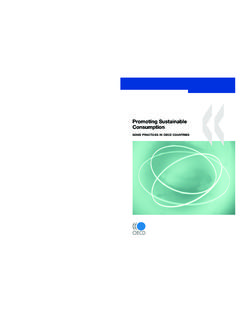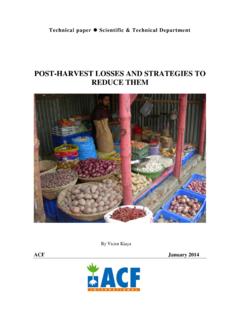Transcription of A Review of Lithium-Ion Battery Thermal ... - Electrochem. Sci
1 Int. J. Electrochem. Sci., 14 (2019) 6077 6107, doi: International Journal of ELECTROCHEMICAL SCIENCE Review A Review of Lithium-Ion Battery Thermal Management System strategies and the Evaluate Criteria Shuting Yang1,2,3, Chen Ling1,2,3, Yuqian Fan4, Yange Yang1,2,3, Xiaojun Tan4,*, Hongyu Dong1,2,3,* 1 School of Chemistry and Chemical Engineering, Henan Normal University, Xinxiang, Henan Province, 453007, China; 2 National & Local Engineering Laboratory for Motive Power and Key Materials, Xinxiang, Henan Province, 453007, China; 3 Collaborative Innovation Center of Henan Province for Motive Power and Key Materials, Xinxiang, Henan Province, 453007, China; 4 School of Intelligent Systems Engineering, Sun Yat-sen University, Guangzhou, Guangdong Province, 510006, China; *E-mail: (X.)
2 Tan); (Y. Dong) Received: 7 December 2018 / Accepted: 26 March 2019 / Published: 10 June 2019 Lithium-Ion batteries have become widely used in energy storage systems. Since adverse operating temperatures can impact Battery performance, degradation, and safety, achieving a Battery Thermal management system that can provide a suitable ambient temperature environment for working batteries is important. This paper provides a Review based on previous studies, summarizes the electrical and Thermal characteristics of batteries and how they are affected by the operating temperature, analyzes the relative merits and specific purposes of different cooling or heating methods, and provides many optimization methods.
3 Moreover, because low power consumption , a high temperature regulation capacity, and excellent temperature uniformity are desired for every Battery Thermal management system, we also present control strategies that can contribute to Thermal management. It is indispensable to establish criteria to evaluate Battery Thermal management systems. We subsequently summarize the characteristic parameters for the analysis of various Battery Thermal management system designs. Finally, we provide an outlook for the development of Lithium-Ion Battery Thermal management systems.
4 Keywords: Lithium-Ion Battery ; Thermal characteristic; Thermal management system; control strategies ; evaluate criteria. 1. INTRODUCTION With growing concerns over fossil fuel depletion and the increasing price of crude oil, electric vehicles have gained more interest as a mode of transportation [1]. Various electric vehicles have been Int. J. Electrochem. Sci., Vol. 14, 2019 6078 developed in recent years, including pure electric vehicles (EVs), hybrid electric vehicles (HEVs), and plug-in hybrid electric vehicles (PHEVs). One keen focus area in the ongoing development of electric vehicles is their energy storage systems.
5 At present, Lithium-Ion batteries are used extensively for automobiles. They include Li-Co Lithium-Ion (LCO), Li-Fe Lithium-Ion (LFP), Li-Mn Lithium-Ion (LMO), and Li-NiCoMn Lithium-Ion (NCM) batteries. When batteries are charging/discharging, various complicated reactions occur. In addition, the Thermal behaviors of the batteries are coupled to these reactions [2]. Electrochemical reactions affect the heat generation rate, and higher temperatures further increase the speed of the electrochemical reactions [3]. To optimize their performances, it is necessary to understand the characteristics of the specific Battery .
6 As previous research has shown, Battery performance is highly dependent on the working ambient temperature. Batteries have a higher request in the working ambient temperature. For example, the Battery state of health (SOH) is influenced by temperature significantly. Battery life may be reduced by 2/3 in hot climates during aggressive driving and without cooling [4]. If a Lithium-Ion Battery operates at a lower ambient temperature long-term, high specific surface area lithium dendrites form on the anode of the Battery , resulting in a rapid decrease in the Battery s SOH [5].
7 With a Battery temperature exceeding the stable point, severe exothermic reactions occur uncontrollably [6]. In addition, if a Battery approaches Thermal runaway, only 12% of the total heat released in the Battery is enough to trigger Thermal runaway in adjacent batteries [7]. This is the biggest risk during the use of Lithium-Ion batteries. As discussed above, batteries working temperatures play significant roles in energy storage systems. Thermal -related research on batteries has been performed previously. One of the aspects studied is improving Battery heat stability performance and lowering the risk of Thermal runaway, which is influenced by the characteristics of the electrode, such as the materials [8-10], electrolyte [11], and separator [12].
8 Characteristics of Battery Thermal runaway processes differ with the variation of the Battery material [13]. Another approach is to add Thermal control components to provide suitable working conditions for batteries, referred to as a Battery Thermal management system (BTMS). A BTMS is a necessary component of Lithium-Ion Battery systems, especially at high ambient temperatures [14]. There are two main functions of BTMSs: 1) to keep batteries working under suitable conditions and improve the electrical performance and Battery life and 2) to prevent Thermal runaway from occurring and improve safety.
9 Most Battery Thermal management methods, such as air cooling, liquid cooling, and phase change material (PCM) cooling, have been reviewed previously [15]. Furthermore, different cooling/heating methods and optimization strategies have been discussed, and the relevant cooling/heating performances were analyzed. In general, there are two demands for BTMSs: 1) the maximum/minimum temperature of batteries must remain within the operating temperature range limit and 2) the non-uniform temperature distribution must remain within the range of the reference limit. To prevent Thermal runaway from occurring and maintain a favorable working performance, serial measurements should be made to cool/heat batteries appropriately, and designing the Thermal path to expel the combustion of electrolyte away from adjacent cells [16].
10 There are three main types of heat transmission patterns, heat conduction, heat convection, and radiation, which determine the Int. J. Electrochem. Sci., Vol. 14, 2019 6079 cooling/heating performance. For example, natural convection and forced convection are two different heat convection modes. In the former mode, the Battery system can operate well with a low heat generation rate. However, failure occurs at a high heat generation rate because the heat of the Battery system cannot be removed quickly enough. In the latter mode, the maximum temperature of the Battery system can be reduced, but it may increase the temperature deviation [17].





